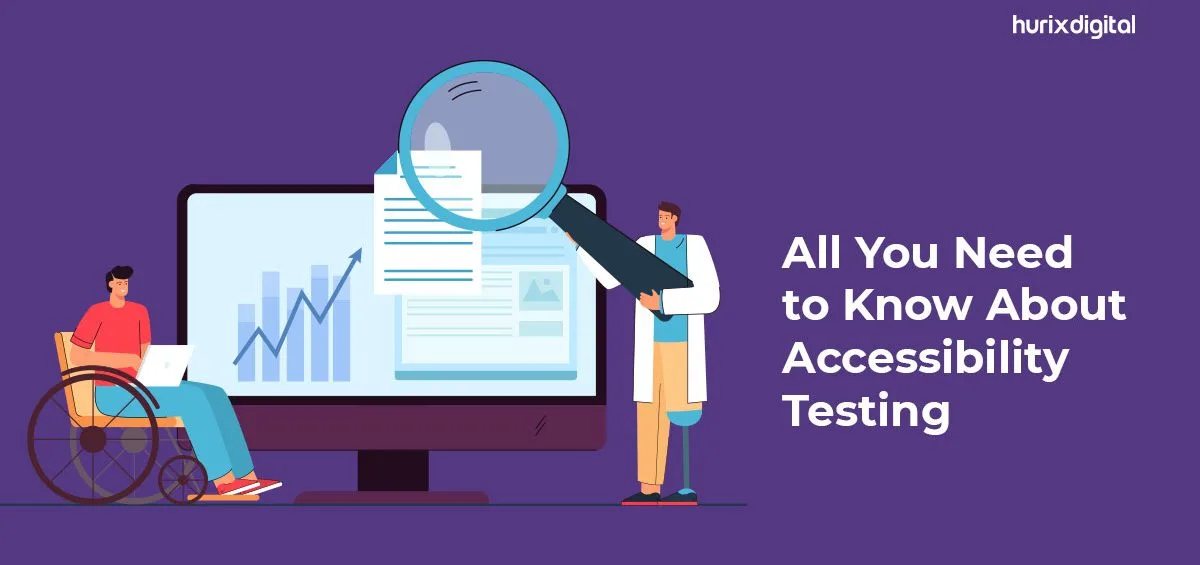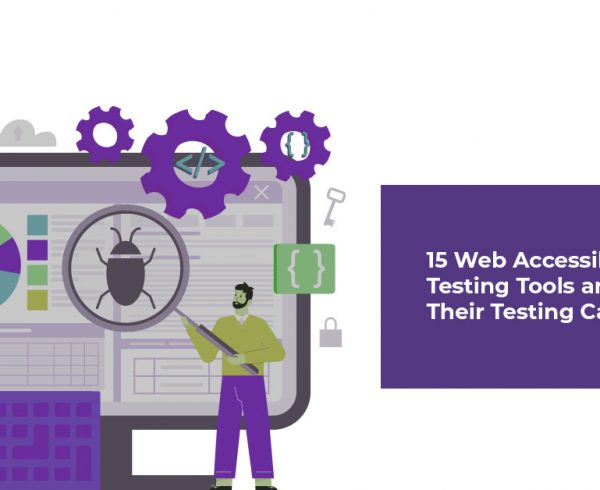The constantly evolving technology is significantly changing the way we live. However, there is not enough discussion happening around how we access this technology. It takes a great deal of effort to create a technological landscape that everyone can use or access.
For instance, if a website, app, or product is released in the market, it must be accessible by every individual, even those with special needs.
This is where accessibility testing comes in. Accessibility testing helps enterprises ensure that their digital content is easy to access by people with and without disabilities.
In this blog, we explore accessibility testing and the reasons it is important for enterprises.
What is accessibility testing?
Accessibility testing refers to the practice of ensuring that the web/mobile applications are fully accessible for people with disabilities such as blindness, motor or cognitive impairments, or hearing problems.
The process ensures that the content on the web is reachable to anyone without any barriers. Accessibility testing, in most cases, is considered a part of usability testing.
As per World Wide Consortium (W3C), there are certain specific guidelines for accessibility testing, which can be classified under the following principles-
- Perceivable: Both the information and user interface should be presentable to users in a way they can easily perceive. For example- including alternate text for images
- Understandable: The content on the UI must be legible. For instance, there must be a meaningful message instead of just the color-driven instructions
- Operable: Navigation through the user interface must be easily accessible and operable. For example, keyboard navigation, where every link on the page must be accessible with a simple keyboard stroke.
- Robust: The UI content must be powerful enough so that it can be accessible for different users. For instance, accessibility of a website URL on the desktop, web as well as on mobile.
Reasons why accessibility testing is important for enterprises
Accessibility testing not only allows enterprises to ensure that the application is accessible to everyone, but also offers several other benefits, as discussed below-
1. Better performance
Accessibility testing can be seen as an overlapping concept of usability, aiming to improve the ease of use and user experience of a product or service.
For instance, there is a requirement by the web accessibility standards that the websites need to be entirely usable and navigable with only the keyboard (i.e., without the use of a mouse). While this largely benefits people with disabilities, making the website navigable simply with a keyboard also helps the business’s wider user base.
Once all the navigational elements of your website are well thought through and organized in a strict hierarchy, it will help users across the board to locate the content they are looking for more easily.
2. Improves website SEO
Creating an accessible website also makes the content more likely to be found by users by improving Search Engine Optimization (SEO).
The main objective of SEO is to drive more traffic to your content by improving the website’s ranking in top search engines such as Google. But, in many cases, the goals of both web accessibility and SEO are aligned.
Creating apps and websites with cleaner interfaces and easier navigation also helps you improve your bounce rate (the percentage of visitors who exit from your website after the only one-page visit).
3. Helps you write better-quality code
Websites and applications that are created with accessibility in mind tend to have a better-quality codebase. This is largely because accessibility testing tools can also identify various errors that create general problems with its usability.
The ability to write cleaner code leads to fewer bugs, a better user interface, and much faster loading times. For this reason, accessibility testing of websites should be seen as an investment in your codebase and the future of your enterprise.
4. Reaches a wider audience
Accessibility testing or improving your website’s accessibility allows you to reach a much wider audience. This is because accessible content can be viewed and used in different ways including text alternatives, written transcripts, captions, keyboard navigation, resizable text, less distracting clutter, fewer timeouts and more. Such accessibility features are very helpful for people who are-
- Not fluent in English
- Using the content in a mobile environment
- Suffering from temporary injuries
- Elderly with age-related decline
Adding features such as seamless support for mobile devices, transcripts, closed captions, and a clean, simple site design will generally benefit all users.
5. Enhanced quality
Accessibility testing enhances the quality of the application manifolds. It helps in transcribing the sounds and music into easy descriptions for people with hearing disabilities.
There are multiple tools available in the market for closed captioning. Captioned software typically contains text that easily transcribes the narration and offers descriptions of the sounds and music in the content. The software is not only useful for people with hearing difficulties, but also benefits people unfamiliar with the vocabulary and those who aren’t native speakers of the language used in the video.
Closed captioning is a great way to improve the quality of your content by ensuring that the accurate message is sent to the user.
And here’s a bonus reason which may not be business critical but just as important in the long run –
Moral responsibility
People with various kinds of impairments are an equal part of the larger society. This makes it a moral responsibility for enterprises to release software and applications that are easily accessible to them.
Overall, building accessible products should be done in a collaborative environment where every stakeholder contributes and works in this direction. A designer needs to ensure the typography and design elements are appropriate for all users, developers need to make use of semantic HTML, whereas copywriters should write meaningful, screen reader-friendly content.
To conclude
Accessibility testing is an excellent methodology that explains how easily users can navigate, access, and understand web/mobile app content. Whether the testing is automated or manual, it is important to check compliance with specific accessibility testing guidelines such as WCAG standards as a reference.
For enterprises, however, it is also extremely significant to understand that creating accessible content is not just helpful for disabled people, but helps other users as well. Making accessibility testing a regular part of the software testing process and implementing all the necessary checks early can improve the overall experience of using an application or website.
Conclusion – Digital Accessibility
Creating an inclusive world is possible only if digital accessibility is available. At Hurix, we believe in equal access to online education, healthcare, and eCommerce for people with special needs. It also means equal access to friendship and growth in the age of social media. To know more about our Accessibility Solutions from HurixDigital, please write to us at marketing@hurix.com.
Need to know more about our Products & Services? Drop us a Note.











